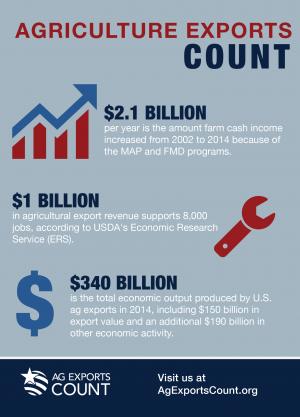Market development turns potential opportunities into realized exports. And that work would not be possible without the support of two long-term initiatives included in the U.S. farm bill – the Market Access Program (MAP) and Foreign Market Development (FMD) program.
The U.S. Grains Council (USGC) and other organizations discussed these successes and how to spread word of their impact during the annual meeting of the U.S. Agricultural Export Development Council (USADEC) this week in Baltimore, Maryland.
“The importance of trade to on-farm income and profitability throughout the grains value chain is why the Council exists,” said Deb Keller, USGC chairman and a farmer from Iowa. “As an organization, we work to link the aspirations of families in far off countries with the productive capacity of U.S. farmers – and the MAP and FMD programs enable us to succeed in doing so.”
Authorized by the U.S. farm legislation and operated by the U.S. Department of Agriculture’s Foreign Agricultural Service (FAS), these programs have set the foundation of the Council’s work to promote U.S. corn, barley, sorghum, ethanol and distiller’s dried grains with solubles (DDGS) around the world. The Council relies on competitive funding from MAP and FMD and matching member dollars to maintain its global network of staff, consultants and programs – a strong public-private partnership with proven results.
MAP and FMD have consistently shown a high return on investment for those providing program dollars. According to a cost-benefit analysis conducted by Informa Economics in 2016, the value of U.S. agricultural exports increased $24 for every $1 invested between 2002 and 2014. Additionally, MAP and FMD account for 15 percent of revenue generated between 1977 and 2014 through U.S. agricultural exports – $309 billion in total.
“There is clear evidence that these programs work for U.S. farmers and, as importantly, for the U.S. taxpayer,” Keller said. “This impressive return on investment amplifies our member funds when we turn MAP and FMD funding into our market development programs.”
An educational website – www.agexportscount.org – offers even more information about the results of the MAP and FMD programs. The site features an interactive map of success stories spanning the breadth and depth of the organizations that use the programs, from high-volume commodities like corn, sorghum and barley to high-value commodities and speciality crops like fruits, nuts and more.
Learn more about the successful results of MAP and FMD here and share stories of how these programs have positively impacted you with the hashtag #AgExportsCount.


